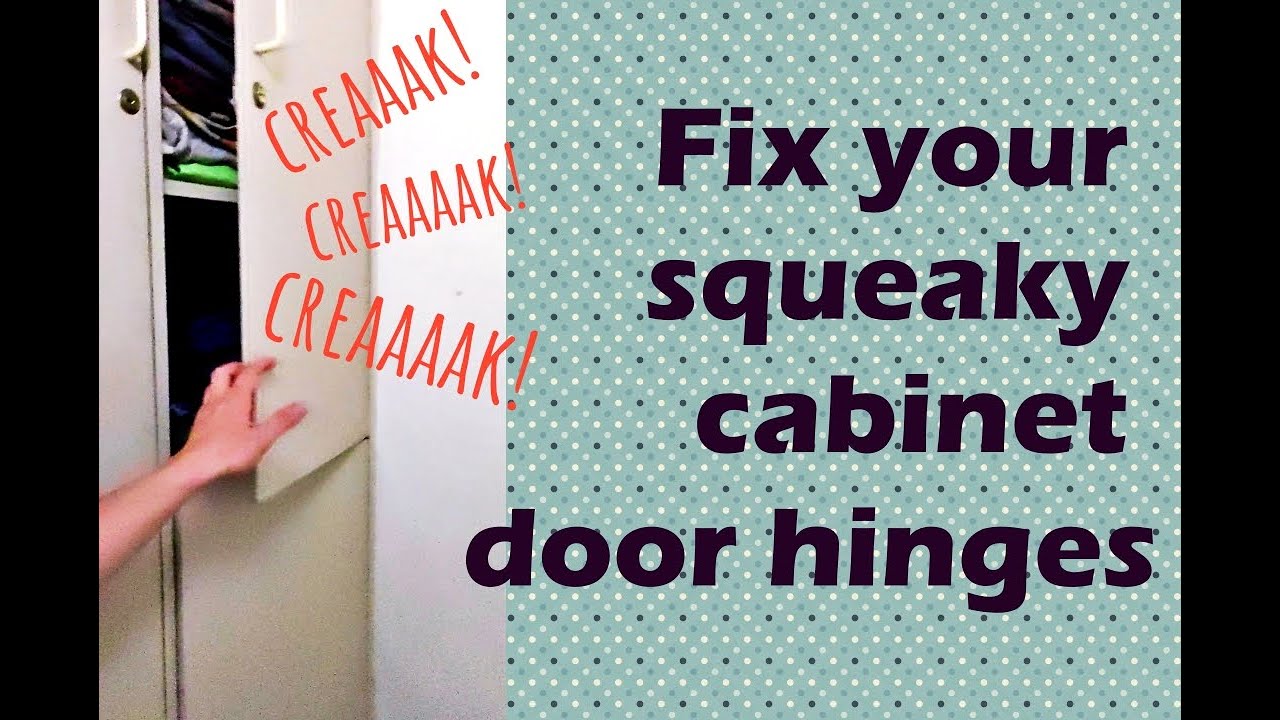
Silence the Squeak: A Comprehensive Guide to Fixing Noisy Door Hinges
A persistent squeak emanating from a door hinge can be one of the most irritating sounds in a home or office. It disrupts focus, annoys occupants, and generally detracts from the peace and quiet of your environment. Fortunately, fixing noisy door hinges is often a straightforward process that can be accomplished with a few common household items and a bit of patience. This comprehensive guide will walk you through the steps necessary to diagnose the cause of the squeak and implement effective solutions to restore silence to your doors.
Understanding the Culprit: Why Do Door Hinges Squeak?
Before diving into the solutions, it’s important to understand why noisy door hinges occur in the first place. The primary culprit is friction. Over time, the lubricant between the hinge’s moving parts dries out or becomes contaminated with dust and debris. This lack of lubrication causes metal-on-metal contact, resulting in that dreaded squeak. Other contributing factors include:
- Rust: Moisture can lead to rust formation on the hinge pins and knuckles, increasing friction and noise.
- Loose Screws: If the screws holding the hinge to the doorframe or door are loose, the hinge may shift slightly, causing binding and squeaking.
- Misalignment: A door that is not properly aligned can put extra stress on the hinges, accelerating wear and tear and leading to noise.
- Wear and Tear: Simply aging hinges can become worn, with increased tolerances allowing movement and noise.
Tools and Materials You’ll Need
Gathering the necessary tools and materials beforehand will streamline the process. You’ll likely need:
- Lubricant: Options include penetrating oil, silicone spray, white lithium grease, or even WD-40 (though WD-40 is a solvent and cleaner first, and lubricant second – better long-term lubricants are preferable).
- Hammer: For tapping the hinge pin.
- Nail Set or Punch: To help drive the hinge pin.
- Screwdriver: To tighten or remove screws.
- Paper Towels or Rags: For cleaning up excess lubricant.
- Small Brush or Toothbrush: For cleaning hinges.
- Safety Glasses: To protect your eyes.
Step-by-Step Guide to Silencing Noisy Door Hinges
Step 1: Identify the Offending Hinge
Open and close the door slowly, listening carefully to pinpoint the exact hinge that is squeaking. Sometimes, it’s obvious, but other times, it can be difficult to isolate the source. If necessary, have someone else open and close the door while you listen closely to each hinge.
Step 2: Apply Lubricant
This is the first and often most effective step. Start by applying a small amount of lubricant directly to the hinge pin and the knuckles (the interlocking parts of the hinge). Work the door back and forth to distribute the lubricant. Wipe away any excess lubricant with a paper towel or rag. If the squeak persists, move on to the next step.
Different lubricants have different properties. Penetrating oil is good for reaching tight spaces, while silicone spray is a dry lubricant that won’t attract dust. White lithium grease is a heavier lubricant that lasts longer. WD-40 can work in a pinch, but its effects are often temporary as it is a solvent and cleaner.
Step 3: Remove and Clean the Hinge Pin
If lubrication alone doesn’t solve the problem, the next step is to remove the hinge pin. Place the nail set or punch against the bottom of the hinge pin and gently tap it upwards with a hammer. Once the pin is partially exposed, you can usually pull it out the rest of the way with your fingers or pliers. Be careful not to damage the pin or the surrounding wood.
Once the pin is removed, clean it thoroughly with a small brush or toothbrush to remove any rust, dirt, or old lubricant. You can also use a solvent like mineral spirits or rubbing alcohol to clean the pin. Dry the pin completely before re-lubricating it.
Step 4: Re-lubricate and Reinstall the Hinge Pin
Apply a generous amount of lubricant to the cleaned hinge pin. Insert the pin back into the hinge, tapping it gently with a hammer if necessary. Work the door back and forth to distribute the lubricant. Wipe away any excess lubricant. This step is crucial for silencing those noisy door hinges.
Step 5: Tighten Loose Screws
Inspect the screws holding the hinge to the doorframe and door. If any of the screws are loose, tighten them with a screwdriver. If the screw holes are stripped, you can try using longer screws or filling the holes with wood glue and toothpicks before re-inserting the screws. [See also: How to Repair Stripped Screw Holes in Wood]
Step 6: Check for Misalignment
Misalignment can put undue stress on the hinges, causing them to squeak. Use a level to check if the doorframe is plumb and the door is square. If the door is misaligned, you may need to adjust the hinges or shim the doorframe to correct the problem. This might involve loosening the hinge screws and inserting cardboard shims behind the hinge plate to slightly adjust the door’s position. [See also: How to Align a Door Frame]
Step 7: Consider Replacing the Hinges
If the squeak persists after trying all of the above steps, the hinges may be worn beyond repair. In this case, the best solution is to replace the hinges with new ones. When choosing replacement hinges, make sure they are the same size and type as the existing hinges. This will ensure a proper fit and avoid the need for modifications to the door or doorframe. Replacing noisy door hinges with new ones can provide a long-term solution.
Preventing Future Squeaks
Prevention is always better than cure. To prevent noisy door hinges in the future, lubricate the hinges regularly, at least once or twice a year. Use a high-quality lubricant and apply it sparingly. Also, check the screws regularly and tighten them as needed. Addressing these minor issues proactively can save you from dealing with annoying squeaks down the road. Regular maintenance ensures your doors swing smoothly and quietly.
When to Call a Professional
While most noisy door hinges can be fixed with DIY methods, there are times when it’s best to call a professional. If you’re uncomfortable working with tools or if the problem is more complex than a simple squeak, a carpenter or handyman can diagnose the issue and provide the appropriate solution. For example, if the doorframe is severely damaged or the door is significantly misaligned, professional help may be necessary. Don’t hesitate to seek expert assistance when needed. Hiring a professional can save time and prevent further damage.
Troubleshooting Common Issues
Sometimes, the source of the noise isn’t as straightforward as a simple dry hinge. Here are a few troubleshooting tips for common scenarios:
- Squeaking After Lubrication: If the hinge continues to squeak after lubrication, it may be that the lubricant isn’t penetrating deep enough. Try using a penetrating oil and working the door back and forth vigorously.
- Squeaking in Cold Weather: Temperature changes can affect the lubrication of hinges. If the squeak only occurs in cold weather, try using a lubricant that is designed for low-temperature applications.
- Squeaking Only When the Door is Fully Open or Closed: This may indicate that the door is rubbing against the frame. Check for signs of wear on the door or frame and adjust the hinges accordingly.
The Environmental Impact of Lubricants
When choosing a lubricant, consider its environmental impact. Some lubricants contain harmful chemicals that can pollute the environment. Opt for eco-friendly lubricants that are biodegradable and non-toxic. This is a small but important step towards protecting the planet. Choosing environmentally responsible products contributes to a sustainable future.
Conclusion
Noisy door hinges are a common nuisance, but they don’t have to be a permanent problem. By following the steps outlined in this guide, you can effectively silence the squeak and restore peace and quiet to your home. Remember to identify the offending hinge, lubricate it properly, tighten loose screws, check for misalignment, and consider replacing the hinges if necessary. Regular maintenance and prevention are key to avoiding future squeaks. With a little effort and the right tools, you can keep your doors swinging silently for years to come. Addressing noisy door hinges promptly can prevent further wear and tear, extending the life of your doors and hinges. Enjoy the tranquility of a squeak-free home!

